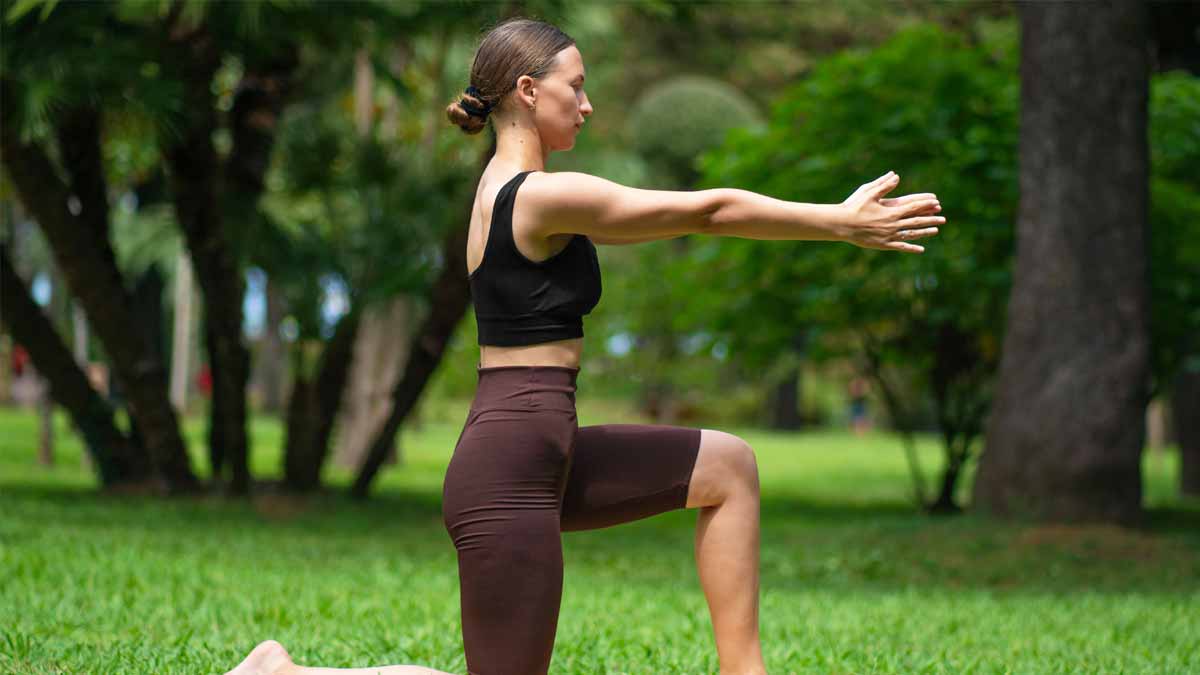Strong hips change how you move, train, and feel, and they do it fast when the work is smart. Stretching eases tension, yet strength through motion builds lasting support. That’s why I coach drills that drive control, blood flow, and joint space. Because mobility shapes stability while preparing the body to work, these three moves beat long passive holds for hips that stay powerful.
Foundations for hips that stay strong beyond passive stretching
Stretching helps tight tissue relax, and it feels great after sessions. Dynamic joint work does more. It pumps oxygen-rich blood, builds control across range, and primes the body to move. The difference matters, since daily tasks and sport both depend on hips that rotate, flex, and extend under load with balance.
You’ll get more from practice when each rep has intent. Keep ribs stacked, brace lightly, and breathe low. Then move through range with steady tempo. Use a supportive mat, because pressure tolerance increases when contact points feel safe. Consistency wins, so pair short practice with training days for seamless gains and recovery.
Because progress relies on control, not tricks, choose clear patterns with repeatable cues. One daily set can already help mobility while you warm up. Add a second set on heavy lower-body days, and the hips thank you. Small steps stack fast when the goal is control over range, not passive stretch.
Internal rotation: the hidden gear of mobility
Healthy hips rotate inward as much as they open out. That inward turn is crucial when you pivot, plant, kick, or cut. Start prone with one knee bent to ninety degrees. Elevate the knee on a block or cushion so the lower leg has room. Then tap the foot down, lift it high, and keep the knee still.
Ground both hip points into the mat as you move. Square your shoulders, and resist the urge to twist. The work belongs at the hip, not the low back. Lift through the shin, pause with control, then lower with ease. Keep breath smooth, because steady breathing ties the trunk to the pelvis and keeps tension useful.
Aim for thirty to sixty seconds per leg. Quality beats range, so do not chase height with compensation. You can keep the knee on the floor if the block feels too much. Because the drill builds rotational control, it feeds into change-of-direction skill and reduces risky torque, while mobility spreads evenly across the joint.
Hip flexion and extension mechanics for daily power
The front of the hip needs both folding and lengthening. Begin in a low squat and rock side to side. Roll through the foot from heel to toe, and test how low you can sit with balance. The goal is smooth pressure through the arches, so the ankles unlock as the groin learns to share load.
Next, step one leg forward from the squat and tap the back knee lightly. Keep the torso tall by bracing the trunk, then press the back hip forward. You’ll feel the psoas and the quad lengthen. Shift weight into the ball of the back foot. That shift challenges balance while freeing stiff ankles and toes.
Use small ranges first, then build time under tension. Two to three gentle taps per side set the rhythm. Because the drill links flexion and extension, walking and running feel easier. Groin tightness eases as the pelvis glides better. One crisp set inside warm-ups already reinforces mobility without extra time or complex gear.
Lateral rotation and sitting comfort in mobility practice
Open-leg positions rely on outward rotation. Set up in frog pose with knees bent and shins flat. Slide the knees wide until you feel a mild stretch, not pain. Place more weight toward your heels. Keep inner knees and the medial edges of the feet on the mat, not the tops, to spare the joints.
From there, glide the hips forward and back with slow control. As you move, the hips also flex and extend. Focus on even pressure through both sides. If your knees feel sensitive, add folded towels or cushions. Small changes in angle create big changes in sensation, so let comfort guide depth while form stays strict.
This combo improves the cross-leg position without forcing it. Because the groin relaxes as rotation improves, the knees settle lower, and sitting feels natural. The move should not aggravate the knees when aligned well. When done correctly and pain-free, it teaches hips to share work across tissues, and mobility gains stick.
Programming, progressions, and safety that respect real bodies
Set simple rules. For internal rotation, hold rhythmic reps for thirty to sixty seconds per side. For the flexion-extension series, flow through two or three knee taps per side after the rocking. For frog-based rotation, build time in small waves. Rest between drills. Quality breath ties each rep together and keeps tension useful.
Progress by adding time, not force. A thicker mat reduces pressure on hips and knees. Blocks or bolsters widen options on stiff days, while bare floor adds feedback when you feel fresh. Because bodies change, let today’s range set depth. If pain appears or symptoms flare, stop at once and reassess your setup.
Remember the key distinction. Stretching improves short-term flexibility, and dynamic stretches can boost range briefly. Strength through motion builds joint control that lasts. Use stretches after training to unwind; use drills to prepare and protect. When you stack careful practice with load, mobility anchors the hips while power grows without strain.
Why these three moves keep hips strong for the long run
Strong hips are built by practice that blends control, breath, and clear cues, not by chasing end-range. Use a mat, add props when needed, and move with intent. Rotate inward and outward, then fold and lengthen with balance. Because mobility thrives on consistency, small daily sets deliver hips that stay ready.
